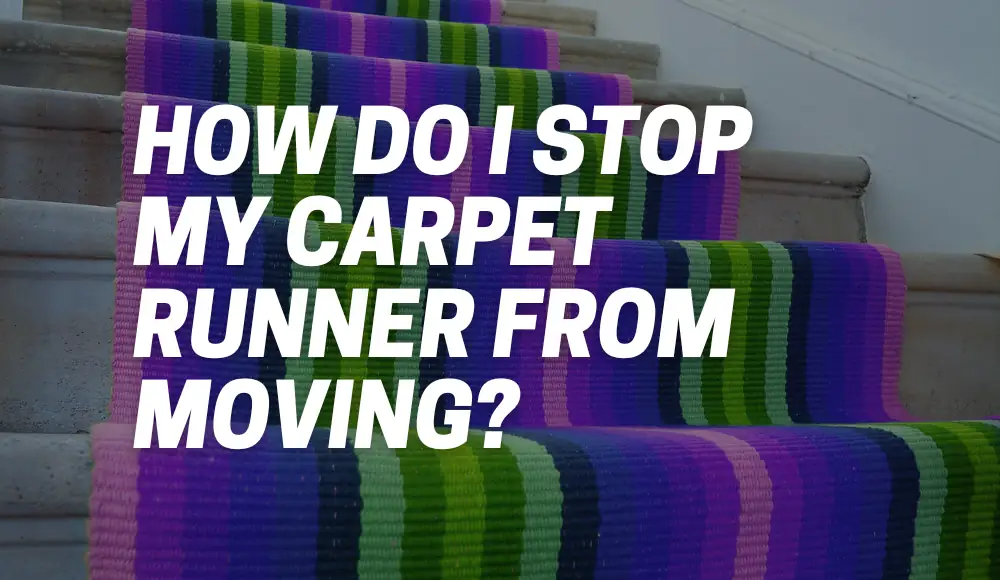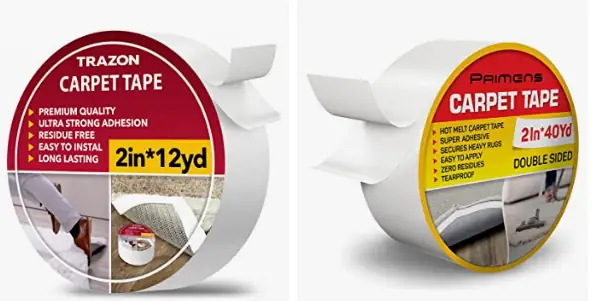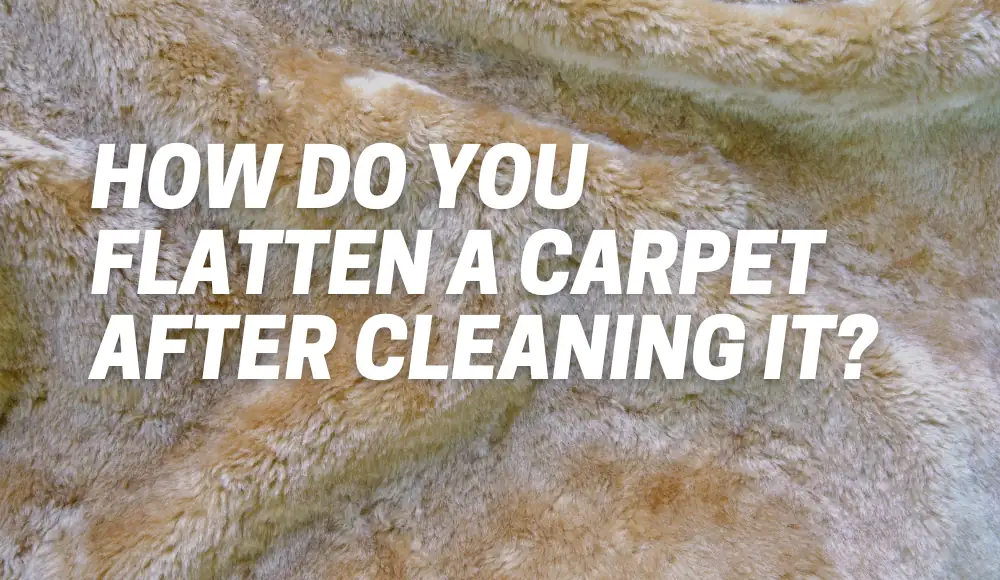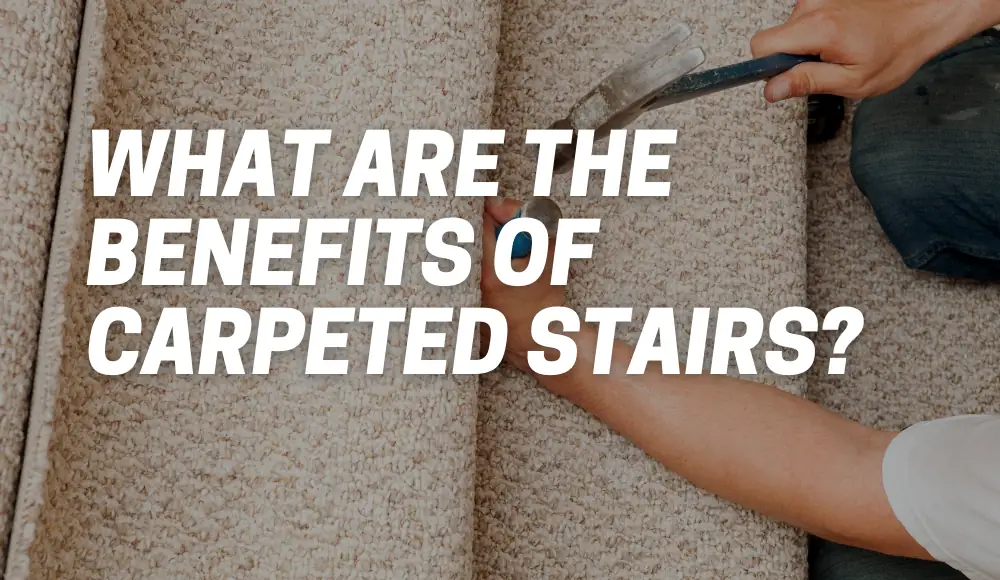Are you tired of constantly adjusting your carpet runner? Do you find yourself slipping and sliding whenever you step on it? Don’t worry, you’re not alone. Many homeowners face the challenge of keeping their carpet runners in place. In this article, we will explore the reasons behind the movement of carpet runners and provide you with practical solutions to answer the question “How do I stop my carpet runner from moving?”.
So let’s dive in and discover how you can secure your carpet runner once and for all!
Why Does My Runner Keep Moving?
One of the most frustrating experiences with a carpet runner is its incessant movement.
But have you ever wondered why it keeps sliding around?
There are a few factors that contribute to this issue.
- First and foremost, the type of flooring beneath the runner plays a significant role. If you have hardwood or tile floors, the smooth surface makes it easier for the runner to shift.
- Additionally, the friction between the back of the runner and the floor can cause it to move over time, especially in high-traffic areas.
The Annoying Issue of Moving Carpet Runners
If you have a carpet runner in your home, you know how frustrating it can be when it just won’t stay in place. You might find yourself constantly adjusting the runner every time someone walks over it or vacuuming the floor to get rid of wrinkles.
The problem is not only annoying, but it can also be hazardous. A moving carpet runner puts you and your loved ones at risk of tripping and falling, especially if there are children or elderly people in the house.
Why It’s Important to Fix a Moving Carpet Runner
The importance of fixing a moving carpet runner cannot be overstated. Not only does it pose safety hazards, but it can also damage your flooring and the runner itself.
A constantly shifting runner rubbing against a rough surface can cause fraying and wear and tear on both the floor and the rug.
Moreover, if left unattended, this problem can lead to higher maintenance costs as well as shorten the lifespan of your flooring material.
To avoid these issues and keep your home looking beautiful while ensuring everyone’s safety, follow our tips on how to stop your carpet runner from moving!
Causes of a Moving Carpet Runner
Uneven Floor Surface
One of the most common causes of a moving carpet runner is an uneven floor surface. If your floors are not level, the weight distribution on your carpet runner will be off, causing it to shift and move around.
Uneven floors can result from settling or shifting of the foundation, changes in temperature or humidity, or even poor construction.
Before attempting to fix the problem of a moving carpet runner, it’s important to determine if an uneven floor is the cause and address it accordingly.
Poor Quality Rug Pad
Another culprit behind a sliding carpet runner is a poor quality rug pad or no rug pad at all. A rug pad provides cushioning and helps prevent slipping by creating friction between the rug and floor.
If you opt for a cheap or inadequate rug pad, it may lose its grip over time due to wear and tear or moisture buildup underneath.
Heavy Foot Traffic
High-traffic areas can also contribute to your carpet runner moving around. The constant movement can cause wear on the fibers and loosen them over time.
If you have children or pets who frequently run back and forth along your hallway, this could be one reason why your carpet runner won’t stay in place.
Improper Installation
Improper installation can lead to an unsecured carpet runner that moves about underfoot all too easily. This could include using insufficient tack strips or staples that don’t hold well enough into subflooring material like concrete slabs (common in many apartment buildings).
Furthermore, poorly aligned seams between separate sections of rugs that make up runners will allow them to shift around even more easily than if everything were lined up correctly from start-to-finish during installation.
Keeping these potential causes in mind can help you identify what might be at fault for your carpet runner’s mobility. By addressing the source of the problem, you can take steps to keep your runner in place and prevent any future issues.
How Do I Keep My Carpet Runners From Sliding?
Now that we understand the causes behind the movement of carpet runners, let’s explore some effective methods to prevent them from sliding:
- Rug Pads: Investing in a high-quality rug pad can make a world of difference. These pads provide grip and cushioning, keeping your carpet runner firmly in place. Look for rug pads specifically designed for use on hardwood or tile floors.
- Double-Sided Carpet Tape: If you’re looking for a more reliable solution, double-sided carpet tape can be a great option. Unlike regular carpet tape, this type is designed to adhere to both the carpet runner and the floor, creating a stronger bond.
- Gripper Pads or Corners: Gripper pads or corners are small adhesive pads that you can attach to the corners of your carpet runner. These pads grip the floor and prevent the runner from shifting. They are a simple and affordable solution.
- Velcro Strips: Using Velcro strips is another effective method. Attach one side of the Velcro to the back of the carpet runner and the other side to the floor. This will help keep the runner securely in place.
Rug Pads
Tape to stop rug moving on carpet
Does Carpet Tape Work on Carpet?
Carpet tape or tape to stop rug moving on carpet, is a popular solution that many people turn to in order to secure their carpet runners.
But does it actually work?
Well, the effectiveness of carpet tape largely depends on the type of carpet you have. In some cases, carpet tape can leave a sticky residue or damage the fibers of your carpet when removed.
However, if used correctly, it can be a temporary fix for keeping your carpet runner in place. Just make sure to follow the manufacturer’s instructions and test a small area first to avoid any unwanted damage.
How Do You Secure a Hallway Runner?
Hallway runners are particularly prone to movement due to the heavy foot traffic they endure.
To secure a hallway runner effectively, follow these steps:
- Clean the Floor: Ensure that the floor is clean and free from any debris or dust. This will help the adhesive products stick better.
- Apply Double-Sided Carpet Tape: Apply double-sided carpet tape along the edges and corners of the runner. Make sure the tape is firmly pressed down onto the floor.
- Use Rug Pads: Consider placing a rug pad beneath the entire length of the hallway runner for added grip and stability.
- Consider Gripper Pads or Corners: If you prefer a non-adhesive solution, attach gripper pads or corners to the corners of the runner. This will provide an extra layer of security.
How Do I Keep My Runner From Moving on My Hardwood Floor?
If you have hardwood floors, you may face a unique challenge in keeping your carpet runner in place.
Here are some methods to help you tackle this issue effectively:
- Use Rug Gripper Pads: Rug gripper pads are specifically designed to prevent rugs and carpet runners from slipping on hardwood floors. These pads provide excellent traction and can be easily trimmed to fit your desired size.
- Apply Silicone Caulk: Apply a thin bead of silicone caulk along the edges and corners of the runner. This creates a grippy surface that helps hold the runner in place without causing any damage to the hardwood floor.
- Consider Hook-and-Loop Fasteners: Hook-and-loop fasteners, commonly known as Velcro, can be a reliable solution. Attach one side of the fastener to the back of the runner and the other side to the hardwood floor. This will create a secure connection.
How Do You Get a Stair Runner to Stay in Place?
Stair runners present a unique challenge due to the angles and curves of the staircase. To ensure your stair runner stays in place, follow these steps:
- Install Stair Rods: Stair rods are decorative rods that span the width of the stair runner, holding it in place. These rods can be attached to the stairs using brackets or clips. They add a touch of elegance while providing stability.
- Use Adhesive Carpet Tape: Apply adhesive carpet tape along the edges and corners of the stair runner. This will help anchor the runner to the steps and prevent any movement.
- Consider Spiral Stair Tread Grips: If you have a spiral staircase, spiral stair tread grips can be a practical solution. These grips wrap around the edge of each step, securing the runner in place.
How to Keep Rugs From Sliding on Tile Floors
Rugs on tile floors can be prone to slipping and sliding, which can be a safety hazard. Here’s how you can keep your rugs from moving on tile floors:
- Rug Gripper Pads: Utilize rug gripper pads specifically designed for tile floors. These pads have a non-slip surface that grips both the rug and the tile, keeping them in place.
- Double-Sided Carpet Tape: Apply double-sided carpet tape to the back of the rug, making sure to press it firmly onto the tile floor. This will create a strong adhesive bond.
- Silicone Caulk: Apply a thin bead of silicone caulk along the edges of the rug. The caulk will create a tacky surface that enhances grip and prevents the rug from sliding.
—
What Is a Rug Pad Gripper?
A rug pad gripper is a specialized product designed to keep rugs from slipping and sliding on various types of flooring. It is typically made of non-slip materials that adhere to both the rug and the floor, providing grip and stability.
What Is the Best Gripper for Carpet?
The best gripper for carpet largely depends on your specific needs and preferences. However, there are a few popular options to consider:
- Rug Gripper Pads: These adhesive pads work well on both hard surfaces and carpeted floors, providing grip and preventing movement.
- Double-Sided Carpet Tape: Double-sided carpet tape is a versatile option that can be used on various surfaces. It creates a strong bond between the carpet and the floor.
- Gripper Corners: Gripper corners are small adhesive pads that are placed on the corners of the carpet. They offer an easy and affordable solution to prevent the carpet from sliding.
How Do You Use Ruggies Rug Grippers?
Ruggies rug grippers are a popular choice for keeping rugs in place. To use Ruggies rug grippers, follow these steps:
- Clean the Floor: Ensure that the floor is clean and free from any dust or debris. This will help the grippers adhere properly.
- Peel and Stick: Remove the backing from the Ruggies rug grippers and firmly press them onto the corners or edges of the rug. Make sure they are securely attached.
- Position the Rug: Place the rug in your desired location on the floor, pressing it firmly onto the grippers. This will help create a strong grip between the rug and the floor.
Can You Glue Carpet Grippers Down?
Yes, you can glue carpet grippers down for added stability.
Use a strong adhesive specifically designed for carpet grippers and follow the manufacturer’s instructions carefully. Keep in mind that gluing the grippers may cause damage to the floor or carpet, so it’s important to consider this before proceeding.
How to Keep a Rug From Sliding DIY
If you prefer a do-it-yourself approach to prevent your rug from sliding, here’s a simple and effective method:
- Silicone Caulk: Apply a generous amount of silicone caulk in a zigzag pattern on the back of the rug, focusing on the corners and edges. The caulk will create a tacky surface that grips the floor and prevents sliding.
- Allow Drying Time: Let the silicone caulk dry completely according to the manufacturer’s instructions before placing the rug back on the floor. This ensures a strong bond between the rug and the floor.
How to Keep Rug from Moving on Carpet?
Keeping a rug from moving on carpet can be a common challenge. Fortunately, there are several effective methods you can try to keep your rug in place. Let’s explore some of them:
- Rug Gripper Pads: Rug gripper pads are specifically designed to prevent rugs from slipping on carpeted surfaces. These pads have a non-slip surface on both sides, creating traction between the rug and the carpet. Simply place the gripper pad under the rug to keep it securely in place.
- Double-Sided Carpet Tape: Double-sided carpet tape can also be used to secure a rug on carpet. Apply strips of the tape along the edges and corners of the rug, making sure to press it firmly onto the carpet. The adhesive properties of the tape will help keep the rug from sliding.
- Caulking or Silicone Adhesive: Applying a line of caulking or silicone adhesive along the back edges of the rug can create a grippy surface that grips the carpet fibers. This method provides an extra layer of traction and stability.
- Heavy Furniture: Placing heavy furniture on the corners or edges of the rug can help anchor it down and prevent movement. This method is particularly useful for larger area rugs or rugs in high-traffic areas.
- Rug Padding: Adding a rug pad underneath the rug provides cushioning and grip. The pad helps keep the rug in place by creating friction between the rug, the pad, and the carpeted floor.
- Velcro Strips: Using Velcro strips is another effective option. Attach one side of the Velcro to the back of the rug and the other side to the carpet. This will create a strong connection and prevent the rug from sliding.
—
Remember to clean the carpet and rug thoroughly before implementing any of these methods. This will ensure better adhesion and prevent dirt or debris from affecting the grip.
Experiment with different techniques to find the one that works best for your specific rug and carpet combination.
By using these methods, you can enjoy a securely anchored rug on your carpet, enhancing both the aesthetics and safety of your living space.
FAQs
How to Keep Plastic Carpet Runners in Place?
Plastic carpet runners can be challenging to keep in place due to their smooth surface. To prevent them from moving, consider using double-sided carpet tape or rug gripper pads specifically designed for plastic surfaces.
How Do You Keep Plastic Carpet Runners in Place on Stairs?
Securing plastic carpet runners on stairs can be achieved by using adhesive carpet tape or installing stair rods.
Adhesive carpet tape creates a strong bond between the runner and the steps, while stair rods hold the runner firmly in place and add an aesthetic touch to your stairs.
With these solutions and techniques, you can say goodbye to the frustration of constantly adjusting your carpet runner. Choose the method that suits your needs and enjoy a secure and stable carpet runner that enhances the beauty and functionality of your home.





